Turks & Caicos Islands
Evveli gun 88 yasinda Miami de hayata gozlerini yuman sevgili agabeyimiz Prof. Mahmut Esat Ozan’in kusursuz Ingilizcesi ile kaleme alinmis sayisiz yazilarindan biri olan ve Piri Reis’in izini ve adalarin ismindeki tarihi gerçegi arastirmak uzere Turks & Caicos adalarina yaptigi yolculuga ait gezi yazisini ilginizi cekebilecegi dusuncesiyle asagida ekliyor, ve bu vesile ile kendisini bir kez daha saygi, sevgi ve rahmetle aniyorum. Nur icinde yatsin, mekani cennet olsun. Mahmut beyi daha iyi tanimak icin bakiniz: Yazdigi sayisiz siirlerden biri icin: MeltemB
Turks & Caicos Adalarına Gezi – Mahmut Esat Ozan
Every Turk, who comes to reside in America, learns sooner or later about the
existence of a group of islands in the Caribbean Sea, known as ‘Turks and
Caicos.’
I was no exception to this rule. Some years ago, not so long after my
arrival to the United States, while looking at an atlas in my graduate
school library, in the Indiana University, in Bloomington, my eyes wandered
to the Southeast section of the Florida peninsula and beyond. There they
were in bold letters: TURKS AND CAICOS.
It’s hard to describe my initial feeling. I was pleasantly
surprised, perhaps, like many others before me, by this unusual geographical
find. Why did these islands carry the word Turks as part of their names?
What did the word Caicos mean, anyway?
After a while, other important things superseded my interest and
unconsciously I placed the matter on the back burner of my mind , so to
speak, thinking about it on the occasions of hurricane warnings or other
situations when the islands names were mentioned.
Yet, my sense of curiosity was increasing during every passing year, and I
knew that I was never going to be satisfied with the answers I was receiving
for my questions from the ‘so-called’ experts. Neither did I wish to pay
attention to some of my Turkish friends, who claimed that not only were the
islands ‘discovered’ by Turks, who gave their name to them, but also the
word Caicos was a derivative of the Turkish word Kayik !
Since the same people were also claiming that the famous falls
at Niagara, described the Turkish exclamation, “Ne yaygara,!” and the South
American river, the Amazon, meant “Amma Uzun,!” I did not take their claims
too seriously.
Years went by. And then a friend sent me a German poster, which
showed an interesting map, with pictorial drawings of ships and strange
horned animals, monkeys, parrots, alligators, and colorful, painted
‘natives’ The legend stated:
Piri Reis,(1465-1555) the famous Turkish Seafarer, drew the
first map of the Atlantic Ocean and the Americas in 1513 on gazelle leather.
The original map can be found in the Topkapi Palace Museum in Istanbul.
This poster, together with the two books on Piri Reis’ exploits,
purchased earlier from ATAA, peaked my interest to the point where I had to
investigate this topic for myself. Was this map a clue? Could it be that
the islands were named for Piri Reis? I could find no information in books
or libraries. So, one fine week-end when I had not much to do, I booked
passage on an airline and made reservations at a local motel on the island
of Grand Turk.
With my notebook, cameras and video equipment in tow, I began on
my fascinating voyage from Miami’s International Airport. My first
destination, was Providenciales, a small town situated on the main island.
Tropical breezes of the Caribbean Sea, and the calypso music were the first
indications, telling me that I was away from and was beyond the Cuban
culture of Miami.
This place had the atmosphere of a different era and time. I was here to
seek answers to questions about a mysterious traveler from the Orient,
visiting these shores many centuries ago. I found myself carefully looking
around as if I were in the presence of an ancient mariner from Turkey, whose
face might momentarily show itself, if not in real time, then in a lengthy
passage from a lingering past.
Before I undertook this trip, I had read stories about the great Turkish
admiral and cartographer, Piri Reis, who, in the early 1500s set out to
discover the lands west of the existing known world of his day. His trip
was made for the deliberate purpose of especially mapping the shores of the
New World, which had been discovered by Christopher Columbus only a few
years before his famous voyage.
What separated his mission from the one of the Italian explorer
from Genoa, was that he knew where he was going, but Columbus did not.
Piri Reis, meticulously charted maps of the Mediterranean Sea, the Iberian
peninsula, the West African coast, the China Sea, South America and the
Caribbean basin which are considered among the very first ones of these
regions.
All this knowledge in my head and the totally new surroundings may have
played a role in my thinking. But not to know what would be awaiting me on
the outer island of Grand Turk was still very beguiling.
I felt that the first thing I had to do, was to get a taxi and go to the
office or to the residence of the Governor General of the islands and ask
for a short interview., I thought that the Hon. Michael Bradley,the
Governor would surely have access to historical records which would explain
the mysterious names of these islands . But I was told at the airport that
he was in England with his family on a vacation.
At the airport the waiting room walls were plastered with the enlarged
photographs of the Lieutenant Governor and other dignitaries, but I found
out that to be able to talk to any of them, I had to submit a written
request 3 weeks ahead of time. It was a pity that I missed the Governor
General. He is said to hold open court daily from 10:00 am till 2:00pm in
the afternoon when he was present.
As I was deciding to see what other options I had, the loudspeaker announced
that my plane was ready for the short 45 minutes flight to the island of
Grand Turk, where I had reserved my stay. Though the single engine 6
passenger airship did not seem to be very reassuring, there was really no
turning back from this.
The plane was ready. We took off. After a few moments of anxious
hesitations, I became as calm as the pilot in the open cockpit, who took off
his listening gear, stretched his arms a bit and uncapped a bottle of water
to quench his thirst. We , the passengers, had none of that luxury, but it
was just a short hop, after all.
Contrary to my suspicions, everything went well. We were now on
the ground. I signaled a taxi to take me to my motel. Even though the name
of the island is Grand Turk, it is, nevertheless, the smallest of the
islands, I was told this by my friendly and also very informative driver.
The main source of income for the islands came from seasonal tourism,
coinciding with the winter months of the Western hemisphere and from
attractive, colorful postage stamps they issue frequently. They also
exported sea products, crayfish and conch. I was there on off-season, when
not very many tourists were visiting the islands. To me this was a blessing
since I was from Miami, Florida, where we have none other than wall-to-wall
tourists all year long. This was going to be a quiet week-end when I could
do my investigation comfortably.
I was set off at the motel ‘Coral Reef,’ a compound of tropical
bungalow-style buildings, housing individual rooms, or suites for larger
groups. Mine was small, very cozy, with all the amenities of a nice
southern U.S. motel.
After a refreshing shower and a light snack brought to my room,
I watched a bit of world news on CNN and went to bed. The next morning I
was up and around early to begin to solve the ever-persistent mystery of
TURKS and CAICOS, after a hardy breakfast, consisting of the same items to
be found in the American breakfast; orange juice, eggs, sausages, hash-brown
potatoes, toast and tea. This island has been, after all, a British Crown
Colony since 1962. Luckily, I happen to prefer tea for my breakfast,
especially when it is brewed in the British way.
My breakfast partner, sharing the same table with me, was a German tourist,
who claimed that this breakfast could even revive the dead.’ It was hard not
to agree with him. Our conversation was interrupted by the prompt arrival
of John, my chauffeur from the previous day, who had promised to show me
‘everything worth seeing.’
On the way to the island’s seaport, I was given a concert y
John, first humming , then singing some of the island’s folk songs. The
radio was broken, he explained. After he had completed his repertoire, I
attempted to get some information on the history of the island, but the only
thing he could offer was that his grandfather had told of some pirates from
the East, who had invaded the islands and ruled them for a long time before
selling them to the British.
This sounded as flimsy as the stories I had
heard from the other side. However, not wishing to antagonize my driver, I
changed the subject to the possibility of the existence of a museum. To my
surprise, he said there was one.
At the town’s seaport, not more than 10 meters from the shore,
we came to an old, stately building. While the waves broke gently on the
sandy beach in front of us with a soothing swish all of their own, we
entered the building, paid the entrance fee, and obtained the special permit
to photograph with flash attachment, and to make video sequences. This
special permit was obtained for an additional few American dollars, which
are also the legal tender on the islands.
The walls of the museum were covered with oil paintings
depicting the passage of Christopher Columbus at the islands known today as
the Turks and Caicos. I was eagerly going through dozens of maps,
reproductions of old etchings and carvings. At one point, I was able to
stop at the cubicle, where an elderly lady was busy arranging brochures, and
stamping posters.
I approached this curator, who surely must know a lot about the island,
introduced myself and asked her about the name of the islands. After some
conversation, in which I told her about Piri Reis, she replied,
“even though I heard of the Piri Reis legend from a TV program I watched not so long ago,
and I know that he was a mariner, I do not know the connection of him being
a Turk and the name of our islands.”
Then she paused for a moment and said,
“However, I remember my grandfather telling me what he had heard from his
elders, that at one time, before the British came to the islands, some
turbaned people with black beards and mustaches, roamed among the different
islands.”
She also mentioned a plant, a cactus, growing wild around the
hills and dales of Grand Turk. “This cactus”, she said, “is the same size as
a human head, with a bump of some sort on top. Every spring the upper part
of this cactus blooms to a bright red in color.”
From afar, these plants have surely the appearance of a Turk’s
head with a turban and a red fez, I imagined. It is not surprising that the
natives call this plant, you guessed it ‘the Turk’s Head.’
The curator became my personal guide, leading me to a display of
very old ship parts, of which she said,
“They have been here for a long time. I am not sure from whose ship they come.”
Looking at these
fragments, pieces of wood, a few links of a chain, an anchor, hooks, metal
bands, spikes, some sort of food utensil, I was waiting, hoping for some
recognizable item, some sign that this is the link, the proof that Piri Reis
was indeed here on this island. But, I saw no crescent and star, no gray
wolf, no blue beads. I had no way of determining such a fact in a
scientific manner, either.
Reluctantly, I moved onto the few other, more modern exhibits.
When I was ready to leave, my guide had a favor to ask of me. She wanted me
to sign the Honor Guest Book. I obliged her with great pleasure. After
filling in the regular name and home town address stuff, I couldn’t refrain
from scribbling the following lines:
“As another Turk visiting your
beautiful islands so many centuries after the first one, I’m signing your
Guest Book in honor of the great Turkish Admiral Piri Reis. May He Rest In
Peace!”
The last place my driver wanted to take me was a resort hotel
run by a Frenchman. He said the name of the hotel was the Turk’s head. I
was properly introduced to the owner of the establishment. Over a couple of
Pernods, our conversation found its subject. I asked my gracious host what
he knew about the name of the islands. The same mysterious silence dwelled
over our talk as had happened in the museum. However, after some moments,
he said that there is a legend still circulating among the better educated,
that around 1560 it is believed that several galleons of pirates had invaded
the islands. Either the captain, or one of the galleon’s name was the Grand
Turk in translation.
Though this semi-legendary and somewhat fanciful information was
not what I had hoped to hear. I had come to the end of my information
sources, and I was ready to return to my home in Miami.
As the Jumbo jet was humming, while flying over the snow-white clouds, of
the blue Caribbean, I was about to doze off after two rather busy and tiring
days. I felt almost transported to a hypnotic level in a shadowy, soft,
dreamy world. I found myself asking the question,
“Has this been the Blue Atlantis of Piri Reis? Were the legendary turbaned
characters of the native lore, the descendants of the crew, who brought the
great admiral to these shores? Was it because of this legendary figure that
the islands are known as the Turks and Caicos? Was my trip to these tropical
lands really productive?”
The answers to all those questions were about to be given by a
white-turbaned, long-bearded gentleman, dressed in his full-length silk
kaftan. He put down his sextant, with which he was measuring the distant
horizons, and was about to speak when a gentle hand shook my shoulder.
I woke up to learn from the hostess that we were about to land at the
International airport in my home town in Florida.
Mahmut Esat Ozan __._,_.___


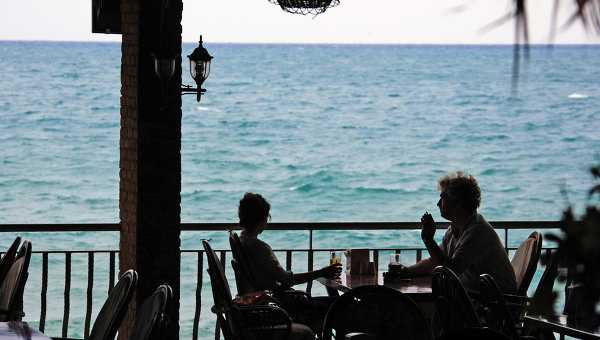
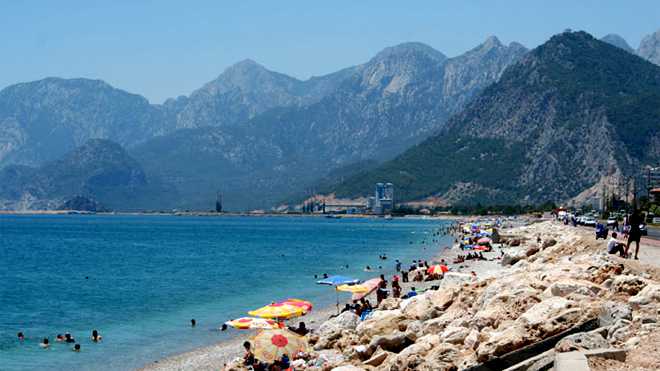

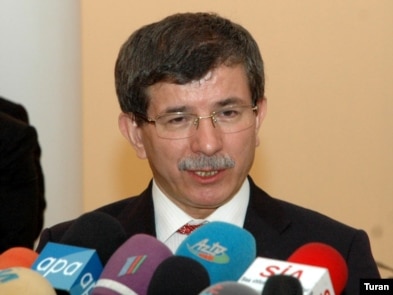
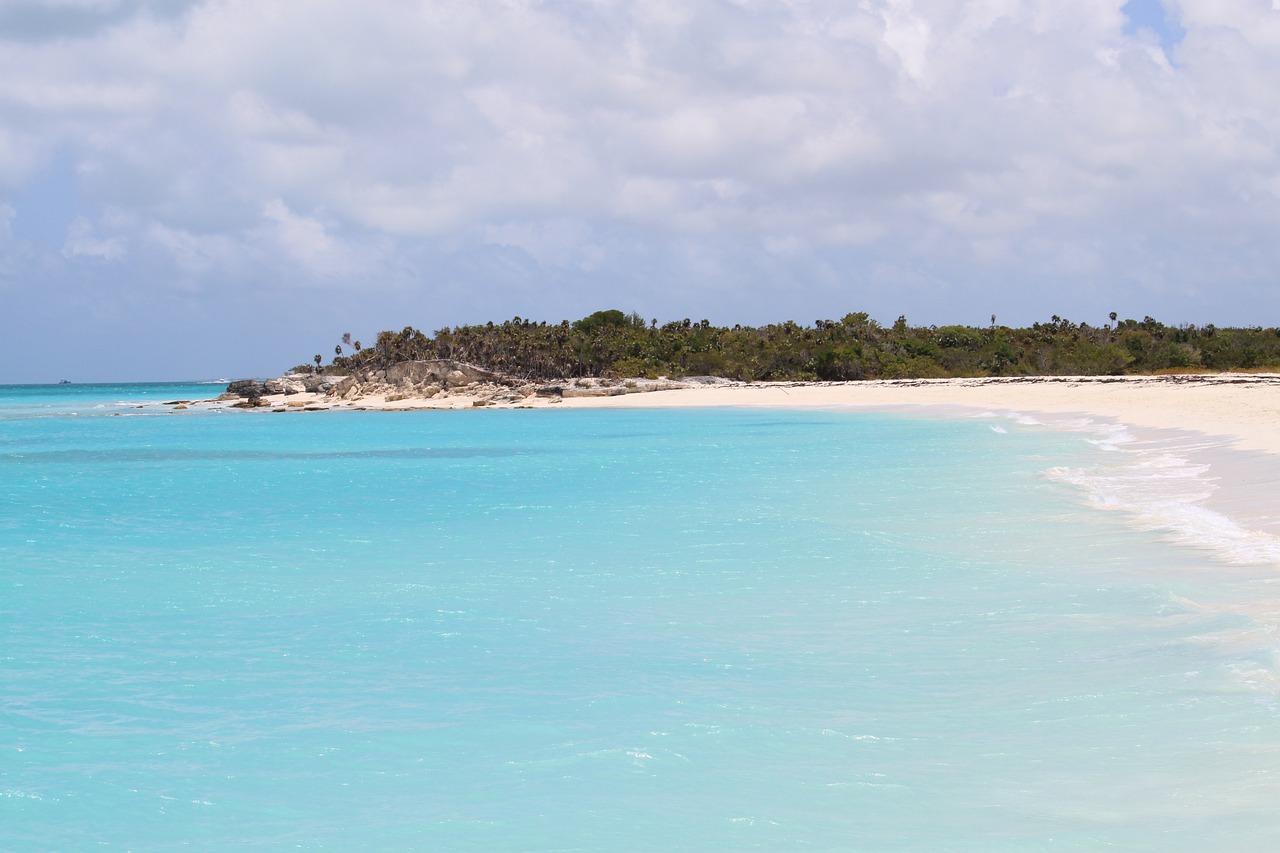
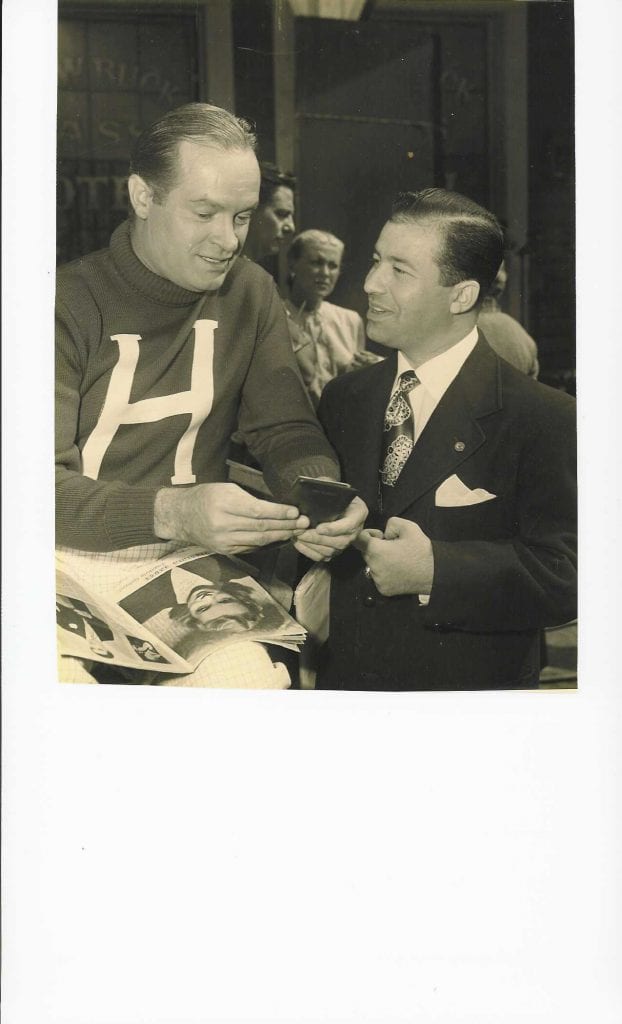
 Sayin M.E. Ozan Genclik Yillarinda Bob Hope ile birlikde Dokumanter yaparken
Sayin M.E. Ozan Genclik Yillarinda Bob Hope ile birlikde Dokumanter yaparken